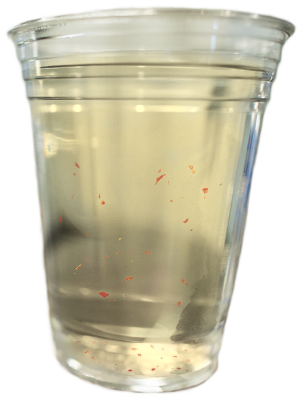We are often asked "What is the best iron filter?". The real answer is, it depends.
Iron can be found in several different forms. Ferrous and Ferric iron are the most common in water wells. Ferrous iron is colorless in solution, but when it comes in contact with air it oxidizes readily, creating red solid particles which are known as Ferric iron. With the iron in Ferric form, the task of removing it from the water is then easily achieved.
The process of converting Ferrous iron to Ferric iron is dependent upon several factors. The most important factor for effective iron removal is the pH level of the water. The pH level strongly dictates which approach to take regarding the removal of iron. Higher pH levels are more favorable for effectively oxidizing the iron. A pH level of 6.8 or higher is desirable. Low pH waters can also be effectively treated for iron removal, but the process becomes a little more involving.
When you hear about bacteria, you may think your water is a health hazard. Unlike harmful bacteria like E. Coli there are other types that are merely annoying to the water-user. For home owners that use a well, the most common bacterial problems come in the form of iron and sulfur reducing bacteria. The levels found in wells are typically not harmful but can become great inconveniences for the home owner.
The process of converting Ferrous iron to Ferric iron is dependent upon several factors. The most important factor for effective iron removal is the pH level of the water. The pH level strongly dictates which approach to take regarding the removal of iron. Higher pH levels are more favorable for effectively oxidizing the iron. A pH level of 6.8 or higher is desirable. Low pH waters can also be effectively treated for iron removal, but the process becomes a little more involving.
- Ferrous - Known as "clear water iron" due to it's invisibility in a freshly-poured glass of water. It can be found in ground water such as deep wells where there is no oxygen for oxidation.
- Ferric - Known as "red water iron" as it is an oxidized form of ferrous iron. Ferric iron has been exposed to oxygen which creates visible red suspended particles in a glass of water.
- Iron Reducing Bacteria - A specialized bacteria which obtains energy through ferric iron. This bacteria creates organic molecules from the CO2 created during the oxidizing of ferrous iron, allowing for their existence. A slimy, gelantin-like substance results from these bacteria growing and can be seen as red feathery floc floating in a freshly-drawn glass of water. When left to sit, iron bacteria will form at the bottom of water-holding areas like toilet tanks. A rainbow slick can form on the surface of water and attach to the plumbing. In some cases it causes great damage, such as clogging of plumbing and appliances; in other cases, iron bacteria can be a minor nuisance with foul, metallic-tasting water.
When you hear about bacteria, you may think your water is a health hazard. Unlike harmful bacteria like E. Coli there are other types that are merely annoying to the water-user. For home owners that use a well, the most common bacterial problems come in the form of iron and sulfur reducing bacteria. The levels found in wells are typically not harmful but can become great inconveniences for the home owner.
| Due to the abundance of iron in ground water, iron bacteria is an extremely common bacterial problem. As oxidizing agents iron bacteria combines dissolved iron and even manganese with oxygen to create a foul slime. Although not a health hazard, this slime can clog well screens, coat plumbing pipes, and result in unpleasant odors and staining throughout your home. Under the right conditions iron bacteria can render a well system virtually useless. There are several signs to look out for to determine if this bacteria is a problem, such as yellow or red tinted water with visible red flakes, an odor similar to fuel oil, cucumbers, or sewage, and slime coating inside toilet tanks. |
Another common well bacteria problem is sulfur bacteria. This bacteria can come in two forms: sulfur oxidizers and sulfur reducers. Sulfur oxidizing bacteria is very similar to iron bacteria in producing a dark slime. Sulfur reducing bacteria live in oxygen-deficient environments which breaks down sulfur compounds, producing the foul-smelling hydrogen sulfide gas. Sulfur oxidizing bacteria are less common than their reducing counterpart but can often be mistaken for iron bacteria with dark-tinted water and slime that causes staining and odor.
Many of our customers know they have iron in their well which causes staining on fixtures and applications or off-tastes in drinking water. The first step to treating these problems is having your water tested to find out what type of iron you have and exactly how much iron you're dealing with. With this information, RainDance can then direct you to the best water treatment equipment that will work with your water chemistry and give you the results you expect.
Many of our customers know they have iron in their well which causes staining on fixtures and applications or off-tastes in drinking water. The first step to treating these problems is having your water tested to find out what type of iron you have and exactly how much iron you're dealing with. With this information, RainDance can then direct you to the best water treatment equipment that will work with your water chemistry and give you the results you expect.




